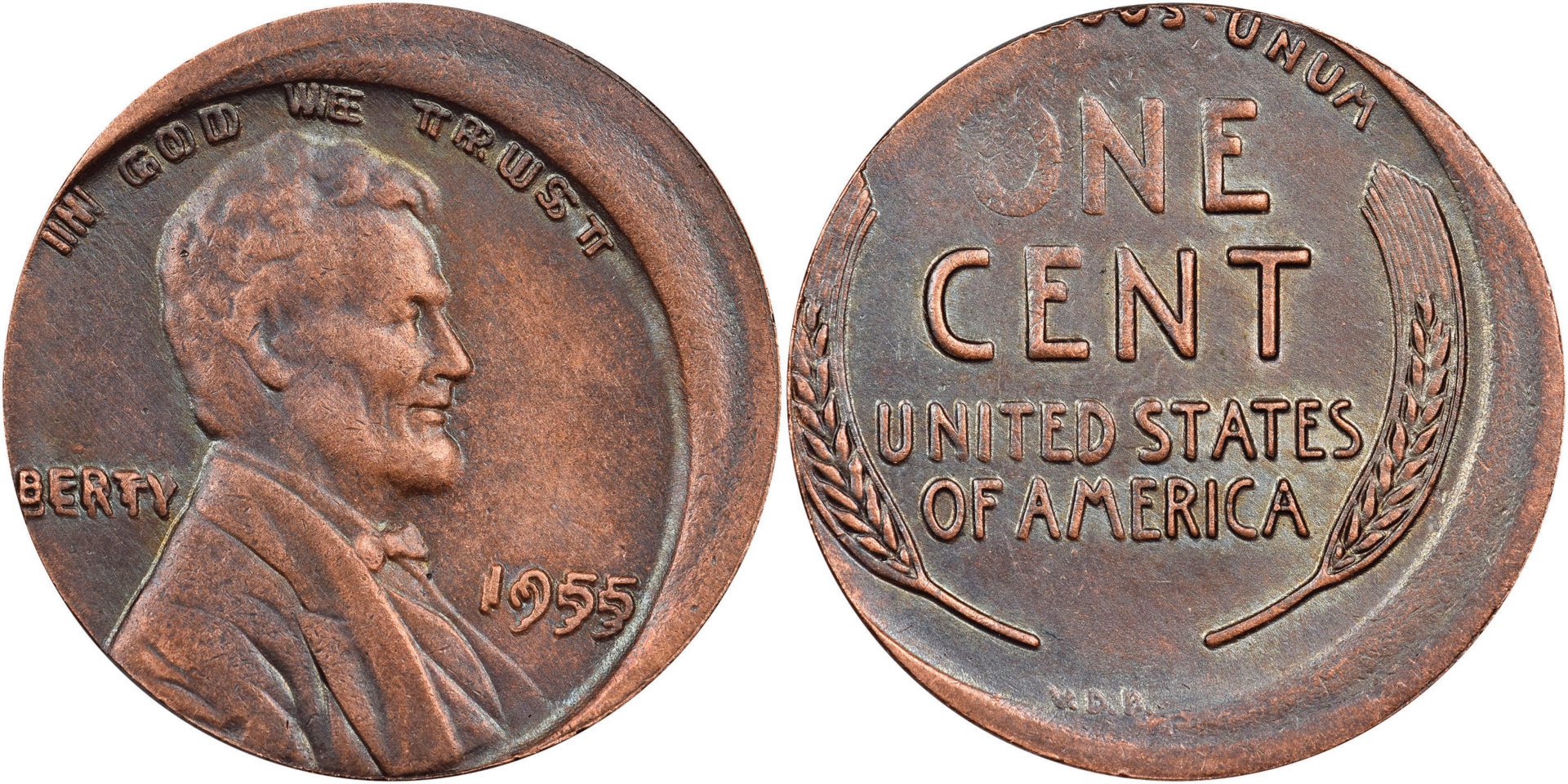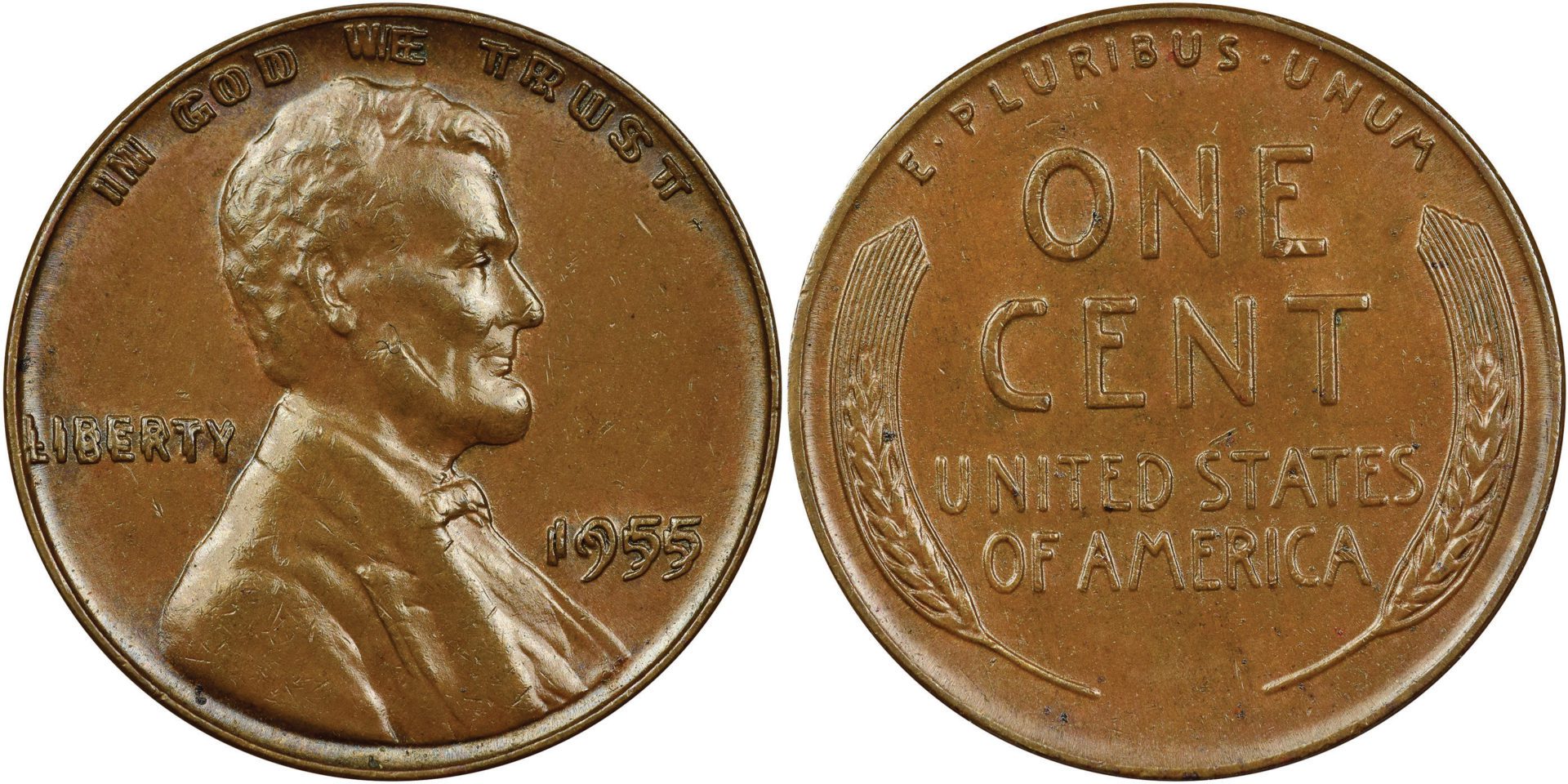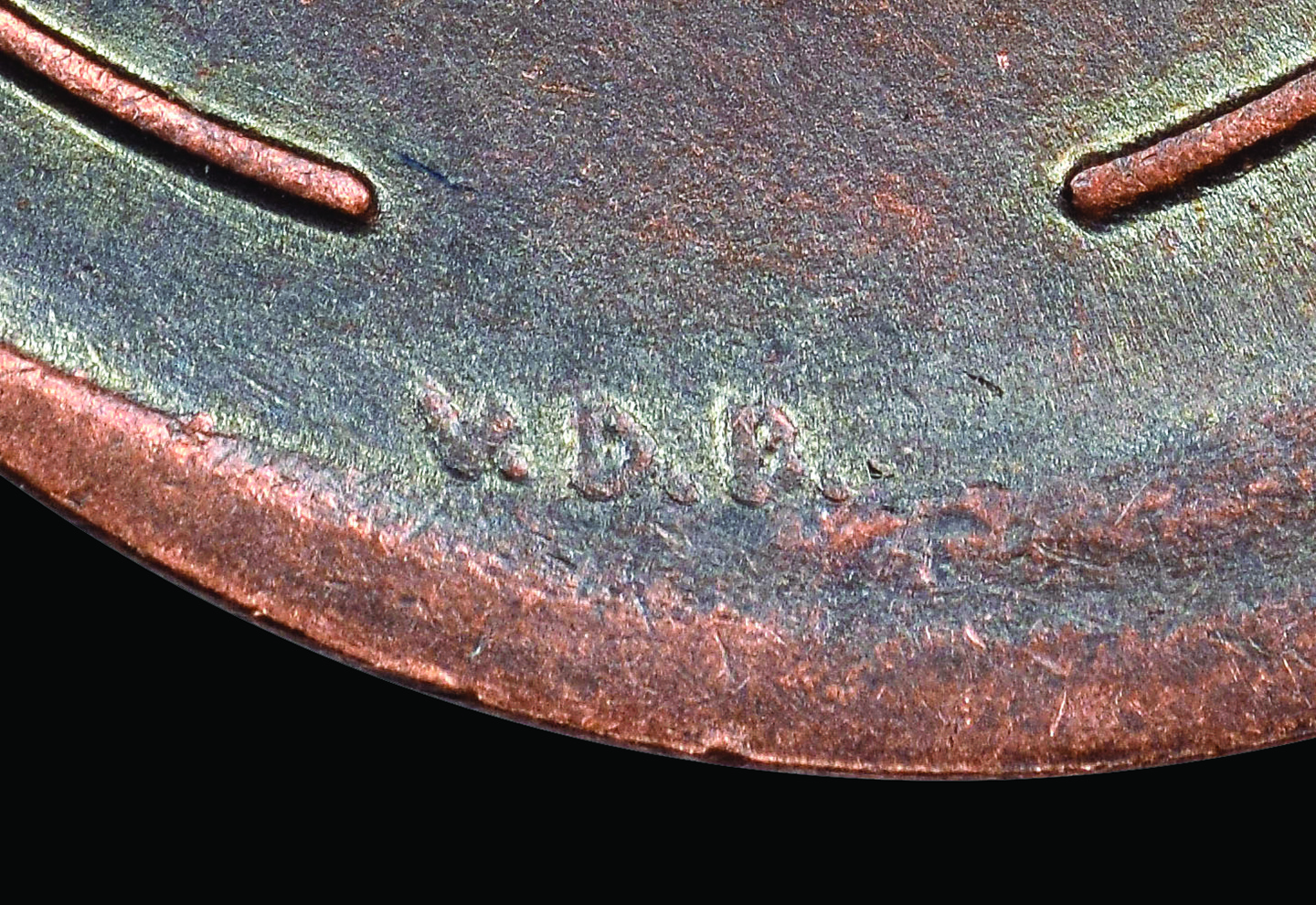1955 Doubled-Die Obverse Cent
Mint errors and varieties are very popular in the numismatic community. To find both on one coin is exceptionally rare, and authentic examples command a large premium. When the variety is the “King of Doubled Dies,” that premium skyrockets even higher.
Recently, Numismatic Guaranty Company (NGC) graders encountered this 1955 doubled-die obverse Lincoln cent. As you can see from the photos, this coin is clearly struck off-center and has the telltale doubling for which this variety is known. It also appears to be slightly worn, as if it spent some time in circulation. Unfortunately, this cent is not genuine, and the supposed wear has been artificially applied to a modern replica of the fabled rarity.


When compared to a genuine example, numerous issues with the fake become apparent. Not only are the details mushy and the date slanted, but the counterfeiter also utilized the wrong reverse die. Note the prominent VDB at the bottom of the reverse. These initials stand for Victor David Brenner, the designer of the Lincoln cent. His initials appear in this location only on 1909-dated examples. It is likely that the same reverse die has been used to strike spurious 1909-S VDB Lincolns.
The counterfeit has the correct weight of 3.1g. However, after it was analyzed using an X-ray fluorescent scanner, NGC graders determined it actually was struck in 100-percent pure copper. A genuine example comprises 95-percent copper, 2.5-percent tin and 2.5-percent zinc.

Whenever you are looking to purchase a coin (especially a key date or variety), it is essential to closely examine the piece and compare it to genuine examples. In this case, an experienced numismatist would immediately be suspicious of such a rare Lincoln cent, especially one with notably odd surfaces and mushy details. As always, any coin purchased in an NGC holder is guaranteed to be authentic.
A version of this article appeared in the June 2020 issue of The Numismatist (money.org).
